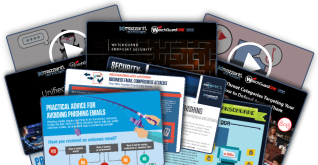Last month, I dozed off during a colleague’s presentation. Not because the topic was dull—far from it, actually. The real culprit? Slides overflowing with text, making it impossible to focus. It hit me: how many times have you or I tortured our own audiences with similar “slide crimes”?
Let’s be honest, my first big presentation was a total disaster. Picture this: me, sweating through my shirt, reading word-for-word from slides that looked like a master’s thesis. The only thing more painful than delivering that presentation was watching my boss try not to fall asleep. Since then, I’ve learned a few things about what makes slides work—and what sends your audience straight to dreamland.
Your Message Comes First
Before you even open PowerPoint, step away from your computer. Grab a coffee and think about what you want your audience to remember. One thing. Not ten—just one. Everything else on your slides is there to support that core message.
This approach changed everything for my presentations. I started treating each slide like a billboard on a highway. If your audience can’t “get it” at 70 mph, it’s too complex. One idea per slide is the rule. Yes, you’ll have more slides. No, that’s not a bad thing. When I stopped cramming everything onto one slide, my presentations got much better—and so will yours.
- Billboard Rule: One idea per slide makes your message clear and memorable.
- Less is More: More slides with less content each are easier to follow than a few overloaded slides.
Embrace White Space and Visuals
White space is your friend—not empty wasteland that needs filling. Think about a fancy restaurant: they don’t pile food edge to edge on the plate, right? Give your content room to breathe. When I started embracing white space, people actually started remembering what I was talking about instead of getting lost in a maze of bullet points.
Let’s talk about images. Cheesy stock photos of people pointing at laptops? Just… no. Use visuals that actually mean something. I recently swapped out all the generic stock photos in a deck for simple icons and relevant screenshots. The difference? Night and day. My audience went from politely nodding off to genuinely engaging with the content.
- Relevant Visuals: Use icons or screenshots that reinforce your point.
- White Space: Don’t be afraid to leave areas of your slide empty for better focus.
For more on using technology to enhance your presentations, check out our advice on live camera feed in PowerPoint for dynamic meetings.
Color, Contrast, and Accessibility
What looks good on your laptop might be unreadable in a conference room. I learned this the hard way after using a gorgeous shade of yellow that vanished on the big screen. Stick to high-contrast colors and always test your slides from the back of the room. And remember, some people are colorblind—your perfect red-green comparison might be useless for them.
- High Contrast: Choose colors that stand out against your background.
- Accessibility: Avoid color combinations that are problematic for colorblind viewers.
Want to dive deeper into accessibility and technical best practices? Explore our Microsoft 365 support innovations for the modern workplace.

Keep Text Short and Sweet
Text-heavy slides are a guaranteed snooze-fest. I follow the coffee shop rule: if someone couldn’t read your slide while walking past a coffee shop window, it has too much text. Six lines max, six words per line—less is even better. Your slides should complement what you’re saying, not compete with it.
- Bite-Sized Chunks: Short, clear phrases are easier to absorb.
- Complement, Don’t Compete: Your slides support your story—they don’t tell it for you.
Need more tips for effective business communication? See our guide to Microsoft Teams benefits for collaboration and engagement.
Technical Prep: Don’t Let Tech Fail You
Nothing kills credibility faster than fumbling with your slides when you should be delivering your message. Test your presentation on the actual equipment you’ll use, check your fonts from the back of the room, and have backup formats ready. That 18-point font might look fine on your laptop, but it’s useless if no one past the first row can read it.
- Test Everything: Run through your slides on the big screen before showtime.
- Backup Plans: Always have a PDF or alternative format available.
Your Slides: Support, Don’t Steal the Show
Your slides should be like a good wingman—there to support you, not steal the spotlight. The best compliment I ever got? “Great presentation! Can you send me your slides?” followed by, “Oh… these seemed much better when you were presenting them.” That’s the goal. Your slides should be like the bass player in a band—crucial to the experience, but not much use on their own.
Next time you’re making slides, imagine explaining your idea to a friend over coffee. Would you pull out 50 pages of dense text? Of course not. You’d sketch something on a napkin, use your hands, tell a story. Make your slides do the same—simple, visual, and focused on supporting your message, not delivering it.
Final Thoughts: Plan, Edit, Focus
Great slides don’t happen by accident. They’re the result of thoughtful planning, ruthless editing, and a clear focus on your audience’s needs. Start by asking: “What does my audience need to see to understand my message?” Not, “What do I want to say?”
Trust me—after enough sleepy audiences, you’ll know what works. Keep it simple, make it visual, and please, don’t read your slides word for word. Your audience will thank you, even if it’s just by staying awake through your entire presentation.
Want to take your presentations—and your business technology—to the next level? Contact eMazzanti today to learn how we can help you deliver your message with clarity, confidence, and cutting-edge IT support.






